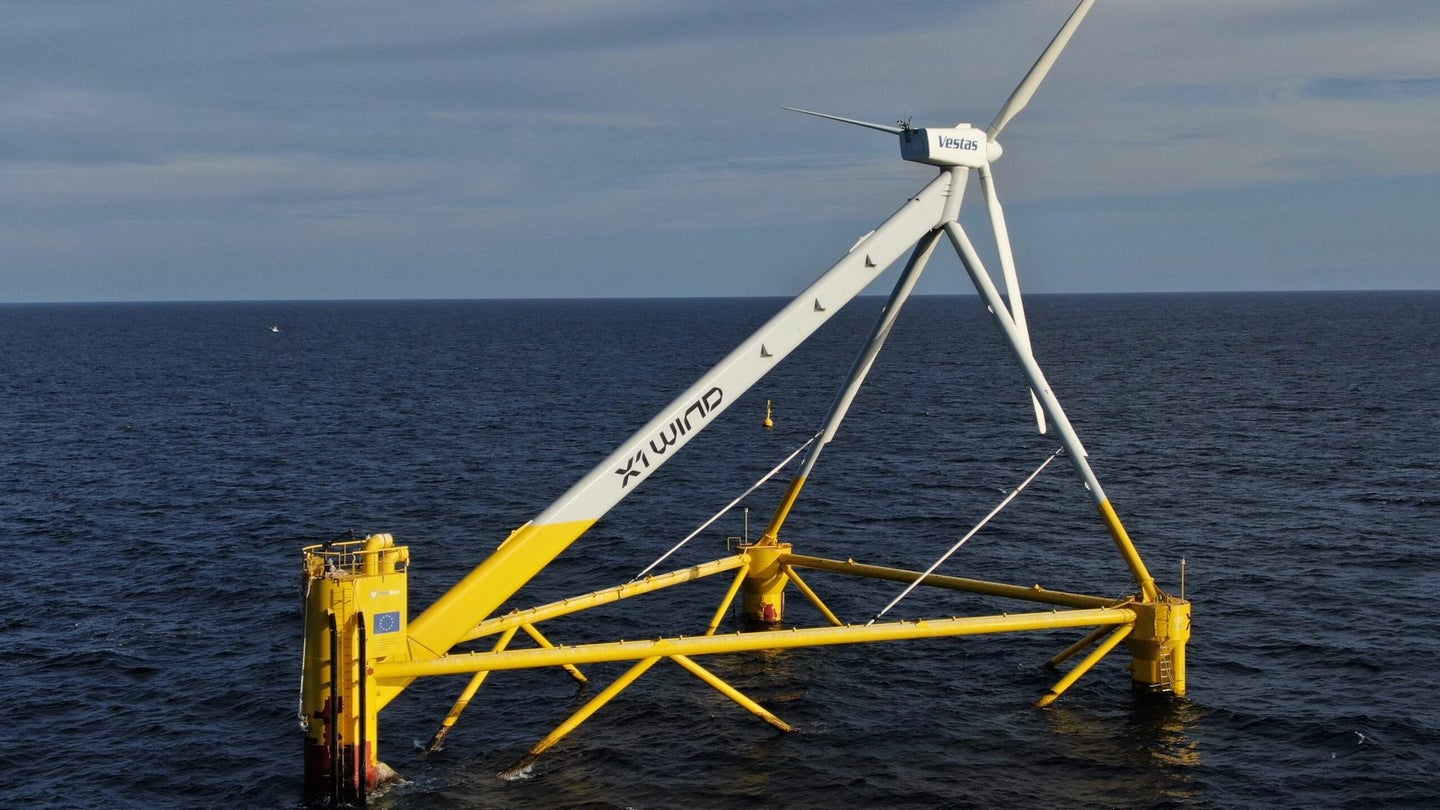This floating wind turbine just generated its first kilowatt hour of power
X1 Wind's X30 prototype utilizes a tension leg platform to reduce its impact on the sea floor.

A floating wind turbine prototype has generated its first 1kWh of power off the coast of Spain’s Canary Islands, marking a major milestone in its makers’ goals to begin manufacturing their novel design at scale. Not to mention, it’s one of the first deployed floating turbines with a tension leg platform (TLP), an innovation that drastically reduces damage to sea floors.
Created by Spain-based X1 Wind, the startup company’s X30 floating prototype is the result of years of planning and fine-tuning, as well as includes several unique components and adaptations. At one-third the size of the final proposed turbine, X30 utilizes PivotBuoy, an augmented single point mooring (SPM) setup that allows the floating platform to passively align with wind currents, much like a classic weathervane. This eliminates the requirement of an active yaw actuator and ballast systems, thus minimizing the turbine’s overall weight and maintenance needs.
[Related: A wind turbine just smashed a global energy record—and it’s recyclable.]
X30’s tension leg platform addition provides boosted environmental benefits. In this setup, a TLP is kept stable and at rest using steel rods anchored to the sea floor with either suction anchors or caissons. The legs remain stretched via the turbine’s platform tension beneath the water line, and its braces will limit the turbine’s vertical movement atop the waves.
From there, a 1.4km underwater cable feeds the X30 prototype’s energy generation into the Oceanic Platform of the Canary Islands’ (PLOCAN) existing offshore test site smartgrid.

X1 Wind’s floating turbine design was first envisioned in 2012 by company cofounder Carlos Casanovas while a student at MIT. Since then, Casanova’s team has worked to bring the concept into the real world. The project first began its design phase in April 2019, before moving onto its manufacturing stage throughout the onset of the COVID-19 pandemic. Final assembly and construction finished in October 2022 in 50m deep waters off of the Canary Islands.
Once thought a pipe dream, offshore floating wind turbines are increasingly showing themselves to be an extremely promising asset in sustainable global energy generation. Speaking in 2022, Axelle Viré, an associate professor of Floating Offshore Wind at Delft University of Technology, estimated that floating wind turbines could be expected to generate between 150-200 gigawatts of energy in the coming decades. Currently, fixed wind turbines only generate 12 gigawatts.
[Related: Scientists think we can get 90 percent clean energy by 2035.]
“Floating wind is set to play a vital role supporting the future energy transition, global decarbonisation and ambitious net-zero targets,” Casanovas stated in a statement on Tuesday. “Today’s announcement marks another significant stride forward for X1 Wind accelerating towards certification and commercial scale ambitions to deliver 15MW platforms and beyond in deepwater sites around the globe.”
X1 Wind hopes to move into full-scale production after its prototype testing is completed, with their floating wind turbines each generating 15mW of clean energy anchored in deep sea environments around the world.
